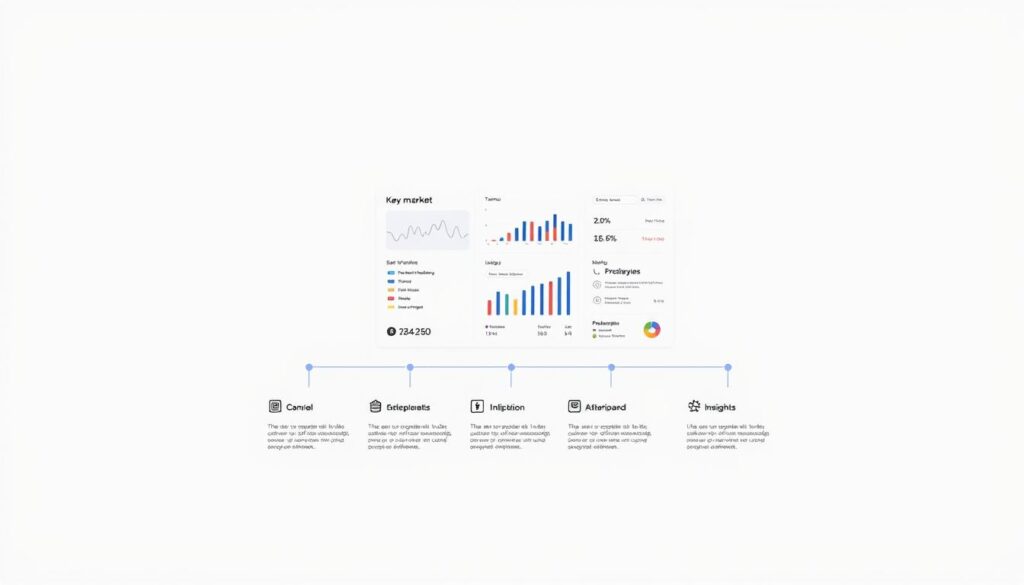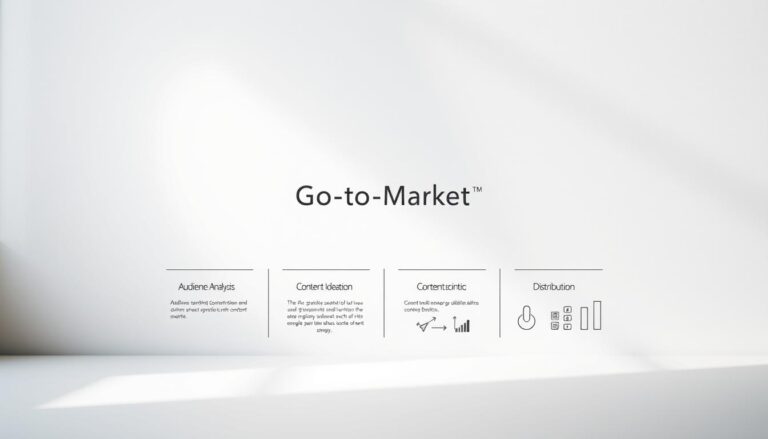A well-designed strategy separates thriving product launches from costly misfires. Research by McKinsey reveals that only 20% of market entries succeed, with four failures for every win. This stark reality underscores why businesses need more than just innovative ideas—they require a battle-tested system to navigate competitive landscapes.
At its core, this approach coordinates three critical elements: precision timing, audience-specific messaging, and strategic channel selection. When aligned, these components create momentum that propels products past common pitfalls. Leading consulting firms attribute 72% of successful expansions to rigorous pre-launch planning.
Small startups and Fortune 500 companies alike benefit from structured processes. The difference between viral adoption and quiet obsolescence often lies in how teams validate assumptions, test pricing models, and adapt to regional preferences. Case studies from tech unicorns and consumer brands prove that even modest investments in strategic groundwork yield exponential returns.
Key Takeaways
- Four out of five product launches fail without proper strategic planning
- Successful frameworks balance timing, messaging, and distribution channels
- Market research reduces risk by 40% according to industry analysts
- Real-world case studies demonstrate measurable ROI from structured approaches
- Scalable processes work for businesses of all sizes and industries
Deep Dive into the go to market framework
Successful product introductions demand more than enthusiasm—they require architectural precision. Industry leaders achieve 3x faster adoption rates by using systematic blueprints that convert analysis into action.
Defining the Framework
This battle-tested system operates through three phases: Analyze (market evaluation), Design (customer targeting), and Deliver (channel optimization). Each phase answers critical questions:
- Which markets offer viable opportunities?
- What specific needs drive buyer decisions?
- How does your solution outperform alternatives?
- Which distribution methods ensure maximum reach?
Why It Matters for Product Launches
Companies skipping structured planning face 83% higher failure rates according to Gartner. The framework’s phased approach prevents costly errors like misaligned pricing or irrelevant messaging. Even dominant brands reinvent their playbooks for new offerings—76% of relaunched products require updated strategies to address shifting consumer behaviors.
Consider mobile app developers: Those using similar systems reduce user acquisition costs by 40% through precise channel selection. This methodology transforms theoretical advantages into measurable outcomes, whether entering emerging markets or revitalizing mature industries.
What is a Go-To-Market Strategy?
Behind every successful product launch lies a blueprint that turns market potential into measurable results. A go-to-market (GTM) strategy acts as this blueprint—a detailed plan coordinating how businesses introduce offerings to specific audiences. Unlike generic marketing plans, it zeroes in on the mechanics of product launches, from pricing models to stakeholder alignment.
Core Components and Objectives
Every effective GTM strategy combines three pillars: customer intelligence, operational alignment, and channel optimization. Teams first define the ideal buyer through demographic and behavioral analysis. They then design tailored messaging that addresses pain points competitors overlook.
Sales processes and marketing campaigns work in tandem under this approach. For example, SaaS companies often pair self-service platforms with targeted LinkedIn ads—a synergy that reduces acquisition costs by 35% in some cases. Pricing strategies and distribution channels get tested through small-scale pilots before full launches.
The ultimate goal? Minimize risk while maximizing early adoption. Businesses using structured GTM plans report 50% faster revenue growth compared to those relying on improvised tactics. As one tech executive notes: “It’s not about having all the answers upfront, but creating systems to find them quickly.”
Key Components of a Go-To-Market Strategy
Businesses that skip thorough market analysis face a 65% higher chance of launch failure—a risk no company can afford. Three elements separate strategic wins from generic attempts: data-driven audience insights, laser-focused segmentation, and messaging that converts curiosity into action.

Market Analysis and Customer Segmentation
Effective strategies start with understanding who needs your solution most. B2B teams analyze company size, tech usage, and purchasing processes. Consumer brands track lifestyle patterns and spending habits. One retail chain boosted sales by 22% after grouping buyers by shopping frequency rather than age.
Segmentation methods vary by industry:
- Manufacturers prioritize geographic reach and order volume
- SaaS providers focus on user roles and integration needs
- Consultancies map decision-making hierarchies
Crafting a Unique Value Proposition
Your offering’s value lies in problems solved, not features listed. A cybersecurity firm might highlight “24/7 breach prevention” instead of technical specs. Case studies show clear UVPs improve conversion rates by up to 40%.
Ask three questions:
- What urgent need do competitors ignore?
- How does your solution create measurable outcomes?
- Why should buyers trust your approach over alternatives?
Companies using proven methodologies align pricing, positioning, and promotions seamlessly. A fintech startup doubled sign-ups by emphasizing instant approvals—a pain point larger banks overlooked.
When to Implement Your GTM Strategy
Timing determines whether innovative ideas become market leaders or expensive lessons. Data reveals 68% of companies require fresh strategic approaches when tackling unfamiliar territory—even with proven products.
Launching New Products
Every product introduction demands custom planning. A tech giant’s smart home device failed initially due to premium pricing in value-conscious markets. Teams rebuilt their strategy around affordability messaging, achieving 150% sales growth in six months.
New offerings face unique adoption barriers. Startups often underestimate regulatory hurdles, while established businesses misjudge brand perception shifts. Structured strategies address positioning blind spots through phased testing—a practice reducing launch risks by 44% according to industry benchmarks.
Expanding into New Markets
Success in Dallas doesn’t guarantee results in Dubai. A U.S. retailer lost $2M trying to sell beef jerky in India before adapting to vegetarian preferences. Market-specific strategies account for cultural nuances, payment habits, and local competitors.
Companies entering Southeast Asia often partner with regional e-commerce platforms rather than replicating Western direct-sales models. “What worked yesterday becomes irrelevant when crossing borders,” notes a global expansion consultant. Recent studies show 60% of market entries fail without localized planning.
Building a Market Strategy Framework
Crafting a market strategy requires turning competitor insights into actionable advantages. Nearly 43% of businesses enter markets without analyzing rivals’ weaknesses, leading to avoidable losses. A structured approach transforms raw data into defensive barriers and offensive opportunities.
Conducting Competitive Analysis
Start by mapping the battlefield. Identify companies solving similar problems through different solutions—a streaming service competes with gyms for entertainment budgets. Evaluate their pricing, distribution networks, and customer loyalty programs. Ask:
- Which features do competitors emphasize in marketing?
- Where do their support systems fall short?
- What pricing tiers create openings for disruption?
One SaaS company discovered 68% of rivals lacked mobile optimization—a gap they exploited through app-first design. This analysis prevents costly assumptions. As noted in structured market strategies, “Blind spots become visible when you systematically compare capabilities.”
Identifying Market Gaps
Opportunities hide where demand outpaces supply. A health tech firm targeted rural areas ignored by urban-focused competitors, capturing 31% market share in 18 months. Look for:
- Geographic regions with limited service options
- Customer complaints about existing solutions
- Emerging technologies competitors haven’t adopted
Data from SimilarWeb shows 55% of startups fail to assess market saturation accurately. One e-commerce brand avoided a crowded skincare niche by focusing on men’s grooming—a segment growing 22% faster than industry averages.
Aligning Business Objectives with Your Strategy
Linking company objectives to actionable plans bridges vision and reality. A 2023 Gartner study found that 82% of strategies fail due to misalignment with core business goals. This disconnect often stems from teams operating in silos rather than connecting tactical moves to organizational priorities.
Integrating Revenue and Growth Goals
Effective strategies act as translators between ambition and execution. Start by mapping how each tactical decision supports quarterly targets or annual growth projections. For example, a SaaS company might tie feature launches to customer retention metrics rather than vanity adoption rates.
Three critical alignment checkpoints prevent resource mismatches:
| Business Objective | Alignment Strategy | Outcome Measurement |
|---|---|---|
| Increase recurring revenue | Upsell campaigns for existing clients | 30-day MRR growth |
| Expand market share | Competitor feature gap analysis | Quarterly penetration rate |
| Improve profit margins | Process automation initiatives | 6-month cost reduction % |
Leadership teams should ask: “Does this initiative directly advance our primary goals?” A healthcare startup redirected $500k from broad awareness ads to physician education programs—a shift that boosted qualified leads by 140%.
Resource allocation remains pivotal. Analyze whether your plan leverages existing strengths or requires new capabilities. Manufacturers often repurpose distribution networks for new product lines, while tech firms might retrain developers instead of hiring specialists.
Regular alignment reviews maintain focus. One fintech company conducts biweekly cross-departmental syncs to ensure marketing, sales, and product teams share unified success metrics. This practice reduced conflicting priorities by 65% in six months.
Segmenting Your Target Audience Effectively
Companies that tailor strategies to precise customer groups see 73% higher campaign conversion rates. Audience segmentation transforms generic outreach into laser-focused engagement, whether targeting corporate buyers or individual shoppers. The process differs radically between B2B and B2C environments—a critical distinction shaping messaging, pricing, and distribution.
B2B Versus B2C Segmentation
Business clients demand data-driven approaches. Effective B2B segmentation analyzes firmographic details like company size and industry verticals. Teams then layer needs-based criteria (specific operational challenges) with technographic insights (software usage patterns). A cybersecurity provider might target mid-sized healthcare firms lacking cloud encryption tools.
Consumer markets prioritize psychological triggers. B2C strategies map demographic boundaries like age brackets before exploring psychographic drivers—values influencing purchase decisions. One athletic brand increased repeat purchases by 29% after segmenting customers by fitness goals rather than income levels.
Behavioral patterns reveal untapped opportunities. While B2B buyers weigh ROI timelines, consumers often respond to emotional appeals. A study shows personalized B2C emails generate 6x higher transaction rates when aligned with past shopping habits. Both approaches require continuous refinement as markets evolve.
Mapping the Customer Journey in the Sales Funnel
Visualizing the path from curiosity to conversion separates strategic marketers from reactive advertisers. The customer journey acts as a GPS for navigating buyer psychology—revealing why prospects engage, hesitate, or commit. Research shows businesses mapping this progression achieve 47% higher lead conversion than those relying on intuition.
Understanding Awareness, Consideration, and Decision Phases
At the awareness stage, potential buyers recognize problems but lack solution awareness. A study by DemandGen reveals 68% begin with generic searches like “how to reduce energy costs” rather than product-specific queries. Content here must educate without overt selling—think whitepapers explaining industry challenges.
The sales funnel narrows during consideration as prospects compare options. They might download case studies or attend webinars evaluating specific features. B2B decision-makers typically review 3.7 vendors before shortlisting, according to Gartner. Tailored comparison guides prove 22% more effective than generic brochures in this phase.
Decision-stage strategies focus on eliminating final objections. Limited-time offers or ROI calculators often tip the balance. As one sales director notes: “Our demo videos addressing implementation fears increased closed deals by 31% last quarter.”
- Track journey drop-off points with funnel analytics tools
- Align content formats to phase-specific buyer needs
- Test urgency triggers at decision milestones
Mapping these phases creates a blueprint for guiding prospects systematically. Companies using journey-based strategies report 53% faster sales cycles by anticipating needs at each turn.
Choosing the Right Sales Model for Growth
Sales architecture shapes revenue potential as much as product quality. Research shows companies aligning their sales model with customer expectations achieve 37% faster growth than those using generic approaches. The choice impacts everything from profit margins to scalability.

Self-Service and Inside Sales Approaches
Self-service models thrive when buyers value speed over guidance. E-commerce platforms using this approach report 28% higher conversion rates for products under $500. Key advantages include 24/7 accessibility and reduced staffing costs.
Inside sales teams bridge automation and personalization. This hybrid model works best for solutions requiring explanation—like software subscriptions priced between $5k-$50k annually. Businesses using targeted outreach see 19% shorter sales cycles compared to passive strategies.
Field Sales and Channel Partners
Complex enterprise systems often need hands-on demonstrations. Field sales teams achieve 3x higher close rates for products exceeding $100k. One medical device manufacturer increased deals by 41% after training reps to conduct live equipment tests.
Channel partners extend reach through established networks. A cybersecurity firm grew its SME client base by 63% using regional IT providers. This approach leverages partners’ local credibility while minimizing upfront market entry costs.
Selecting the Best Marketing Channels
Channel selection separates brands that resonate from those lost in the noise. Businesses must match platform strengths with audience behaviors at each funnel stage. This alignment ensures resources fuel growth rather than dilute impact.
Inbound Versus Outbound Tactics
Inbound strategies attract prospects through valuable content and organic discovery. SEO-optimized blogs and educational webinars build trust with early-stage buyers. Research shows these methods generate 54% more leads than outbound approaches.
Outbound tactics proactively reach audiences through ads or cold outreach. While effective for urgent campaigns, they often cost 62% more per lead. A balanced mix works best—software companies using both methods report 28% faster pipeline growth.
Leveraging Social Media, SEO, and PR
Top-funnel channels like TikTok and LinkedIn Communities spark awareness through shareable content. Middle-stage prospects engage with case studies or live Q&A sessions. For decision-phase buyers, targeted email sequences with free trials close 37% more deals.
PR amplifies credibility during launches, while localized SEO captures high-intent searches. Brands using integrated channel strategies see 3x higher customer retention. As one CMO notes: “Our YouTube tutorials drove 41% of demo requests—proof that relevance beats reach.”
FAQ
How does a go-to-market strategy differ from general marketing plans?
A go-to-market strategy focuses specifically on launching products or entering markets with surgical precision. Unlike broader marketing plans, it aligns sales, pricing, and customer success teams around measurable outcomes. Companies like HubSpot use this approach to coordinate product-led growth with targeted demand generation.
What’s the most common mistake businesses make in customer segmentation?
Many companies confuse firmographics with actual buyer needs. For example, Salesforce avoids this by analyzing usage patterns in their CRM platform alongside industry data. Effective segmentation combines behavioral insights with demographic filters to identify high-intent audiences.
Can startups benefit from formal market strategy frameworks?
Absolutely. Frameworks help startups like Notion avoid scattered efforts by defining clear channels and messaging early. Even lean teams use simplified versions to prioritize product-market fit experiments and track conversion metrics systematically.
How do enterprise sales models impact channel selection?
Complex sales cycles in companies like IBM require hybrid approaches. Field sales teams handle enterprise deals while self-service portals cater to SMBs. The key is matching channel investments to customer lifetime value – high-touch for strategic accounts, scalable digital tools for volume segments.
Why do 72% of product launches underperform revenue targets?
Most failures stem from inadequate competitive benchmarking. Successful launches by brands like Dropbox show the importance of stress-testing value propositions against alternatives. Teams that map competitor weaknesses to customer pain points capture market share faster.
What metrics matter most in evaluating GTM success?
Beyond revenue, track lead-to-customer conversion rates and sales cycle length. Adobe measures content engagement depth alongside pipeline velocity to optimize campaigns. Cohort analysis of retention rates also reveals whether messaging resonates post-purchase.
How does buyer journey mapping reduce customer acquisition costs?
Detailed journey analysis helps companies like Shopify eliminate friction points. By identifying where prospects stall in awareness-to-decision phases, teams can deploy targeted nurturing campaigns. This precision lowers wasted ad spend and improves sales team efficiency.



